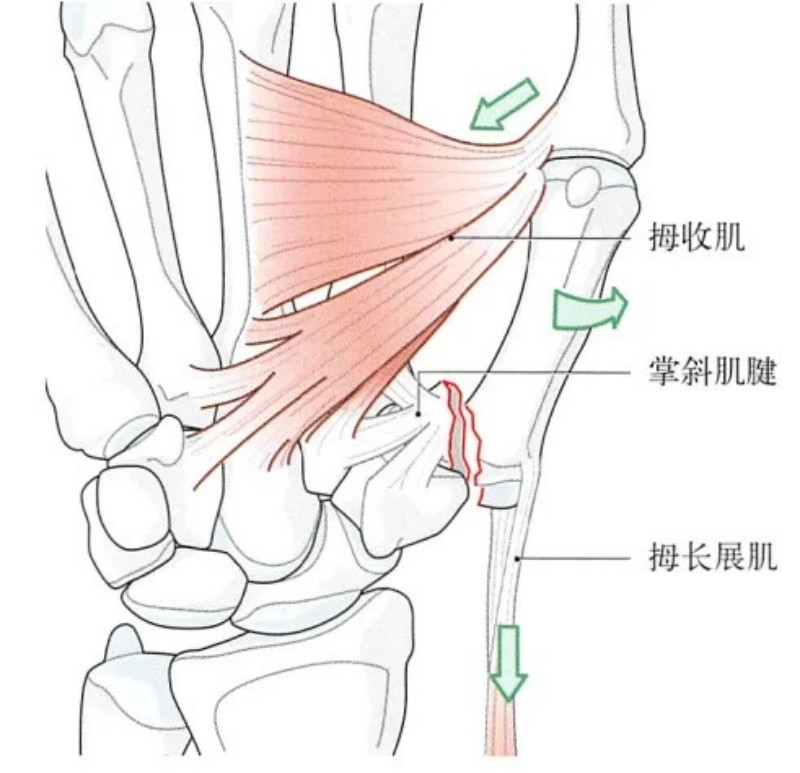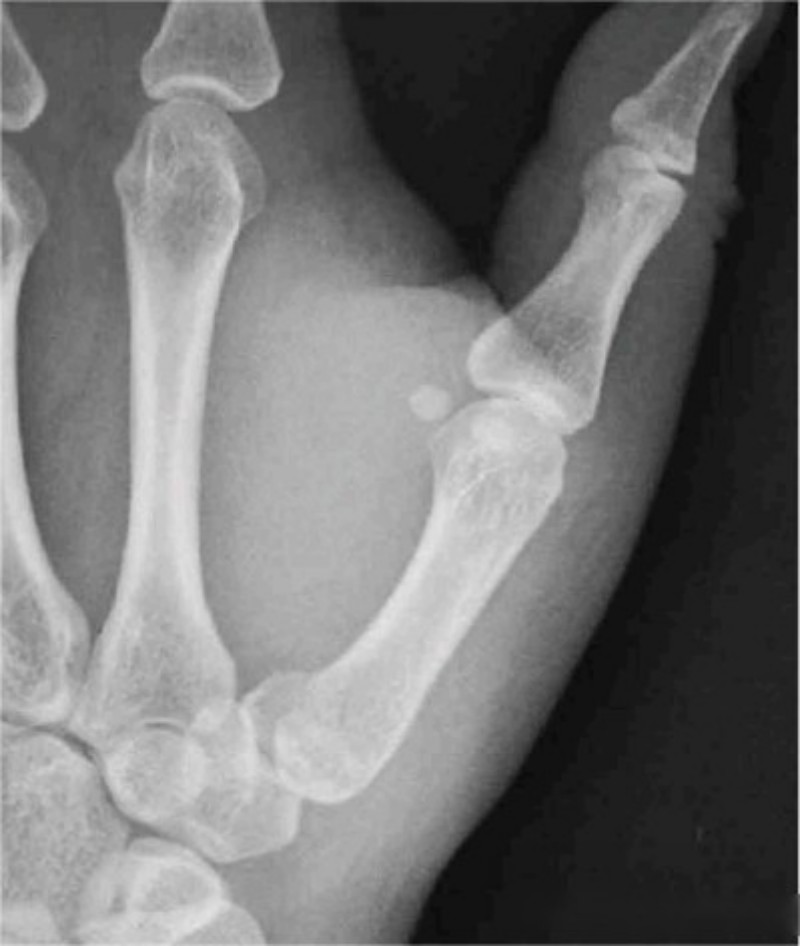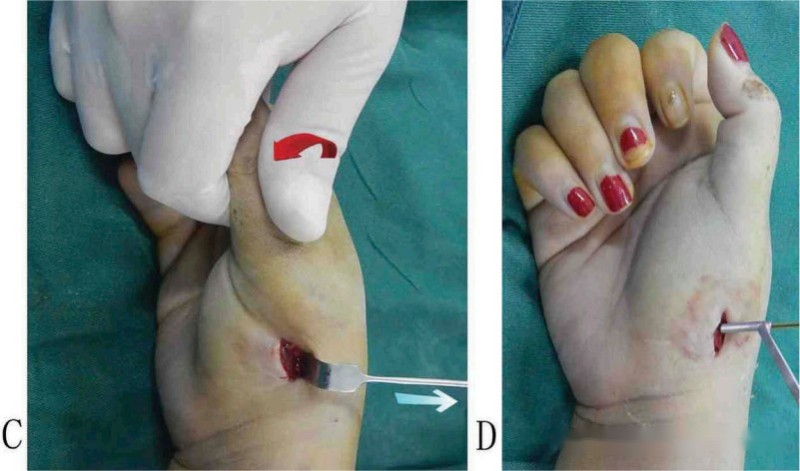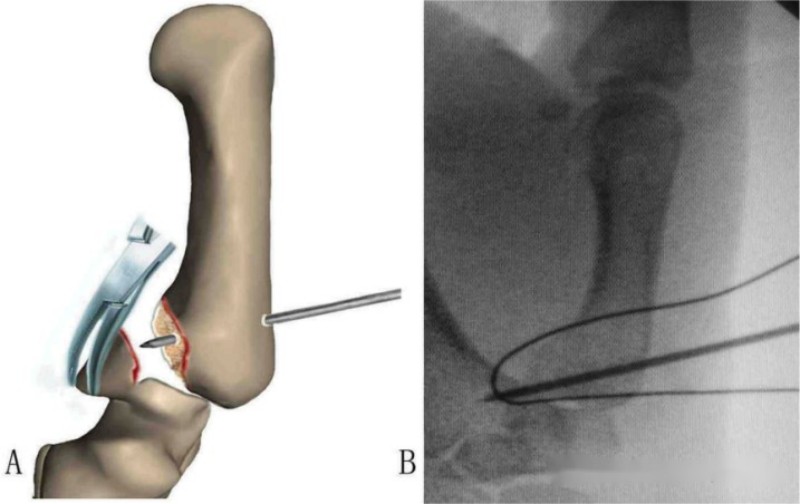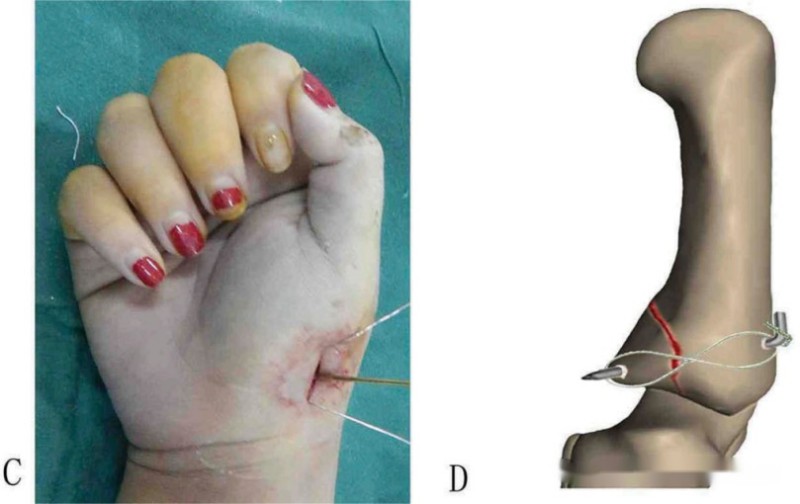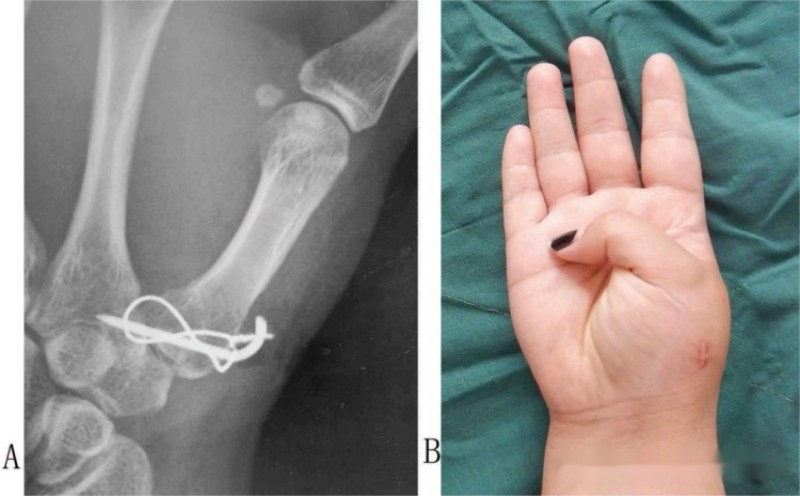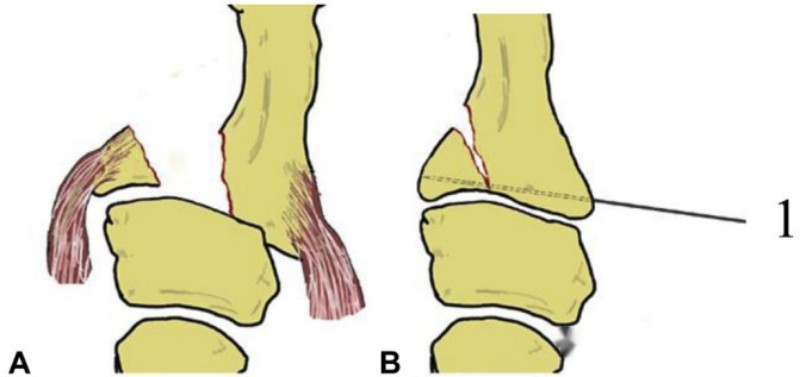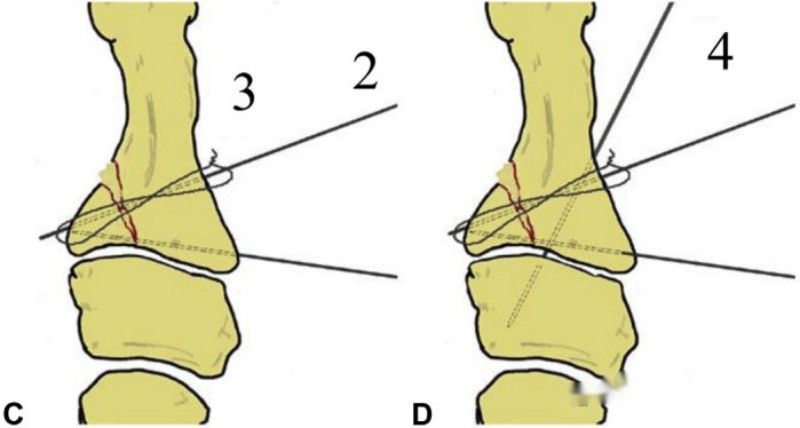Bennetts fraktur står for 1,4 % av håndfrakturer. I motsetning til vanlige frakturer i bunnen av metakarpalbenet, er forskyvningen av et Bennett-brudd ganske unik. Det proksimale artikulære overflatefragmentet opprettholdes i sin opprinnelige anatomiske posisjon på grunn av strekk fra det skrå metakarpale ligamentet, mens det distale fragmentet, på grunn av strekk fra abductor pollicis longus- og adductor pollicis-senene, dislokeres dorsoradialt og supineres.
Ved forskyvede Bennetts frakturer anbefales vanligvis kirurgisk behandling for å unngå å svekke justeringen av karpometakarpalleddet og tommelfunksjonen. Når det gjelder kirurgiske behandlingsmetoder, er plate- og skruefikseringssystemer, samt intern fiksering med Kirschner-tråd, mye brukt i klinisk praksis. Forskere fra Hebei sitt tredje sykehus har foreslått en Kirschner-trådspenneteknikk, som involverer et minimalt invasivt lite snitt for å fikse Bennetts frakturer, med gode resultater.
Trinn 1: Lag et snitt på 1,3 cm på den radiale siden av karpometakarpalleddet, disseker lag for lag for å eksponere området, trekk abductor pollicis longus tilbake mot ulnarsiden, og eksponer den dorsale siden av karpometakarpalleddet.
Trinn 2: Bruk manuell traksjon og proner tommelen for å redusere bruddet. Før en 1 mm Kirschner-tråd gjennom den distale bruddenden, 1–1,5 cm fra karpometakarpalleddet, for å fiksere det proksimale beinfragmentet. Etter at Kirschner-tråden har penetrert beinfragmentet, fortsett å føre det frem 1 cm.
Trinn 3: Ta en ledning og surr den i et åttetallsmønster rundt begge ender av Kirschner-ledningen, og fest den deretter på plass.
Kirschner-trådstrekkbåndteknikken har blitt brukt i mange frakturer, men for Bennett-frakturer resulterer det lille snittet ofte i dårlig sikt og gjør prosedyren utfordrende. I tillegg, hvis frakturen er komminutert, kan det hende at en enkelt Kirschner-tråd ikke effektivt stabiliserer det proksimale beinfragmentet. Den kliniske praktiske anvendeligheten kan være begrenset. I tillegg til den nevnte strekkbåndfikseringsmetoden, finnes det også en Kirschner-trådfiksering kombinert med en strekkbåndteknikk, som også har blitt rapportert i litteraturen.
Publisert: 24. september 2024





